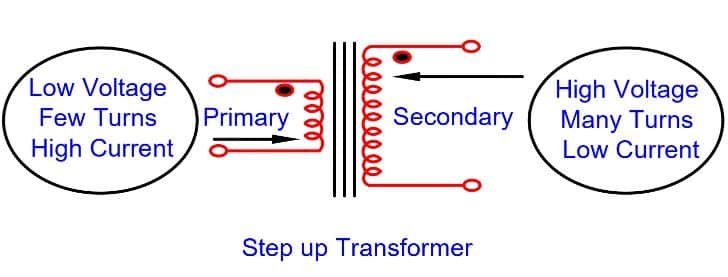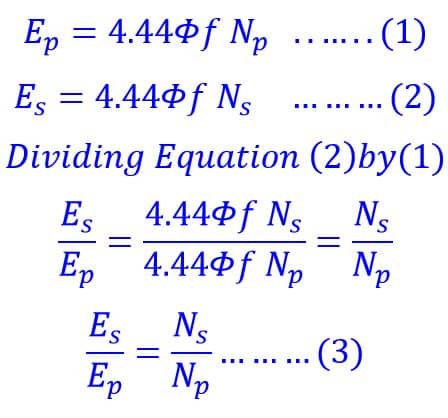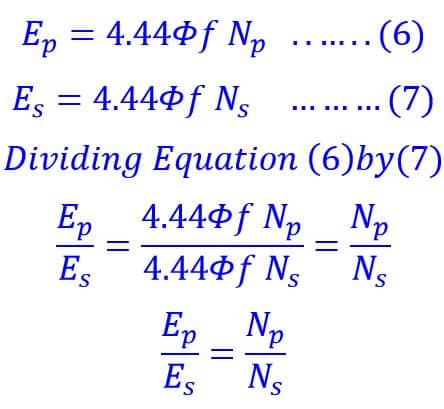Definition-step-up and step-down transformer: Step-up transformer step-up the primary voltage. On the other hand, the step-down transformer step-down the primary voltage. Thus, the secondary side voltage of a step-up transformer is higher than the primary side voltage. similarly, the secondary side voltage of the step-down transformer is lower than the primary side voltage. Step-up & step-down transformers are widely used for voltage transformation at generating & distribution substations.
Step-up Transformer
Considered a step-up transformer shown in the figure below.

The Ep and Es are the primary and secondary voltages, and Np and Ns are the numbers of turns of the primary and secondary winding.
The primary and secondary induced voltage of the transformer are;

In a step-up transformer;
Es > Ep
It is possible only if,
Ns >NP
A step-up transformer has more turns on the secondary than on its primary. The primary winding that carries less current has a thick copper wire. And, the secondary winding which carries the low magnitude current has a thin copper wire. This leads to a reduction in copper loss.
Applications
The copper loss is proportional to the square of the current flowing through the conductor. For long transmission of large power, We boost the voltage by a step-up transformer. With boosting of voltage, the current reduces and power delivery remains the same. To transmit the power, If we double the voltage the current reduces to 1/2.
P= VI ——(4)
P= (2V) X I/2 = VI ——(5)
From equations 4 and 5, we can say that the power remains the same after increasing the voltage. The copper loss in the transmission line is
P= I2R
P= (1/2)2R = 1/4
It means if we increase the voltage 2 times, the losses will become 1/4 th of the losses.
Therefore, a step-up transformer is most suitable for high voltage transmission from the generating station. To sum up, high voltage transmission has the following advantages.
- Reduced line losses
- Reduced voltage drop
- Improved voltage regulation

Step-down Transformer
Considered a step-down transformer shown in the figure below.

The Ep and Es are the primary and secondary voltages, and Np and Ns are the numbers of turns of the primary and secondary winding.

In a step-up transformer;
Ep > Es
It is possible only if,
Np >Ns
A step-down transformer has more turns on the primary than the secondary. The primary winding that carries less current has a thin copper wire. And, the secondary winding which carries the large current has a thick copper wire.
A step-down transformer has a primary and secondary winding wound on the iron core. The step-up & step-down transformer function on the principle of magnetic induction between the coils. When we supply AC supply to transformer primary, it generates flux in the core. The core flux links to the secondary winding and induces voltage in the secondary winding of the transformer.
Applications

The step-down transformer is used for the following applications.
- Electrical isolation
- For home appliances
- For rectifier or converter
This is all about Step-up & a Step-down Transformer.